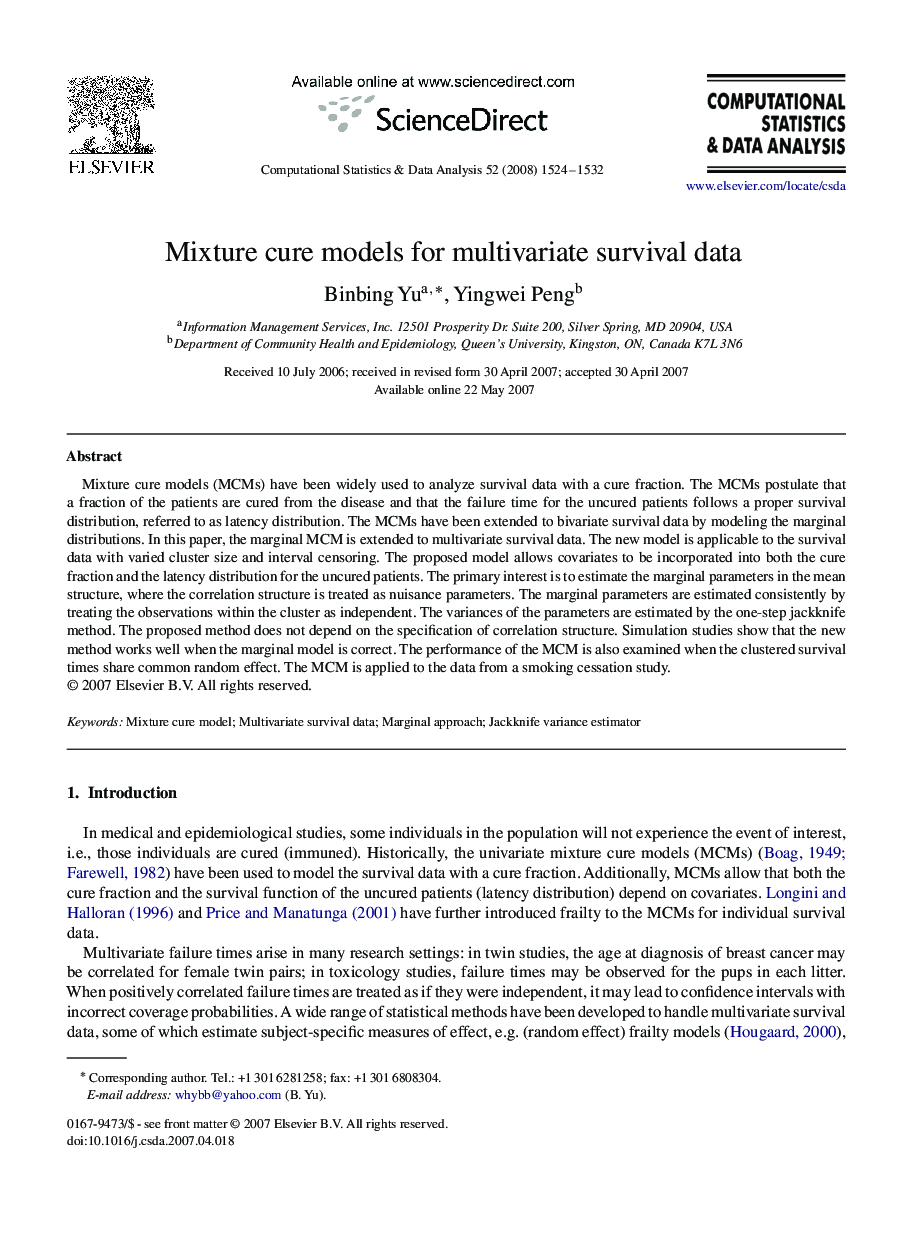| Article ID | Journal | Published Year | Pages | File Type |
|---|---|---|---|---|
| 415439 | Computational Statistics & Data Analysis | 2008 | 9 Pages |
Mixture cure models (MCMs) have been widely used to analyze survival data with a cure fraction. The MCMs postulate that a fraction of the patients are cured from the disease and that the failure time for the uncured patients follows a proper survival distribution, referred to as latency distribution. The MCMs have been extended to bivariate survival data by modeling the marginal distributions. In this paper, the marginal MCM is extended to multivariate survival data. The new model is applicable to the survival data with varied cluster size and interval censoring. The proposed model allows covariates to be incorporated into both the cure fraction and the latency distribution for the uncured patients. The primary interest is to estimate the marginal parameters in the mean structure, where the correlation structure is treated as nuisance parameters. The marginal parameters are estimated consistently by treating the observations within the cluster as independent. The variances of the parameters are estimated by the one-step jackknife method. The proposed method does not depend on the specification of correlation structure. Simulation studies show that the new method works well when the marginal model is correct. The performance of the MCM is also examined when the clustered survival times share common random effect. The MCM is applied to the data from a smoking cessation study.
